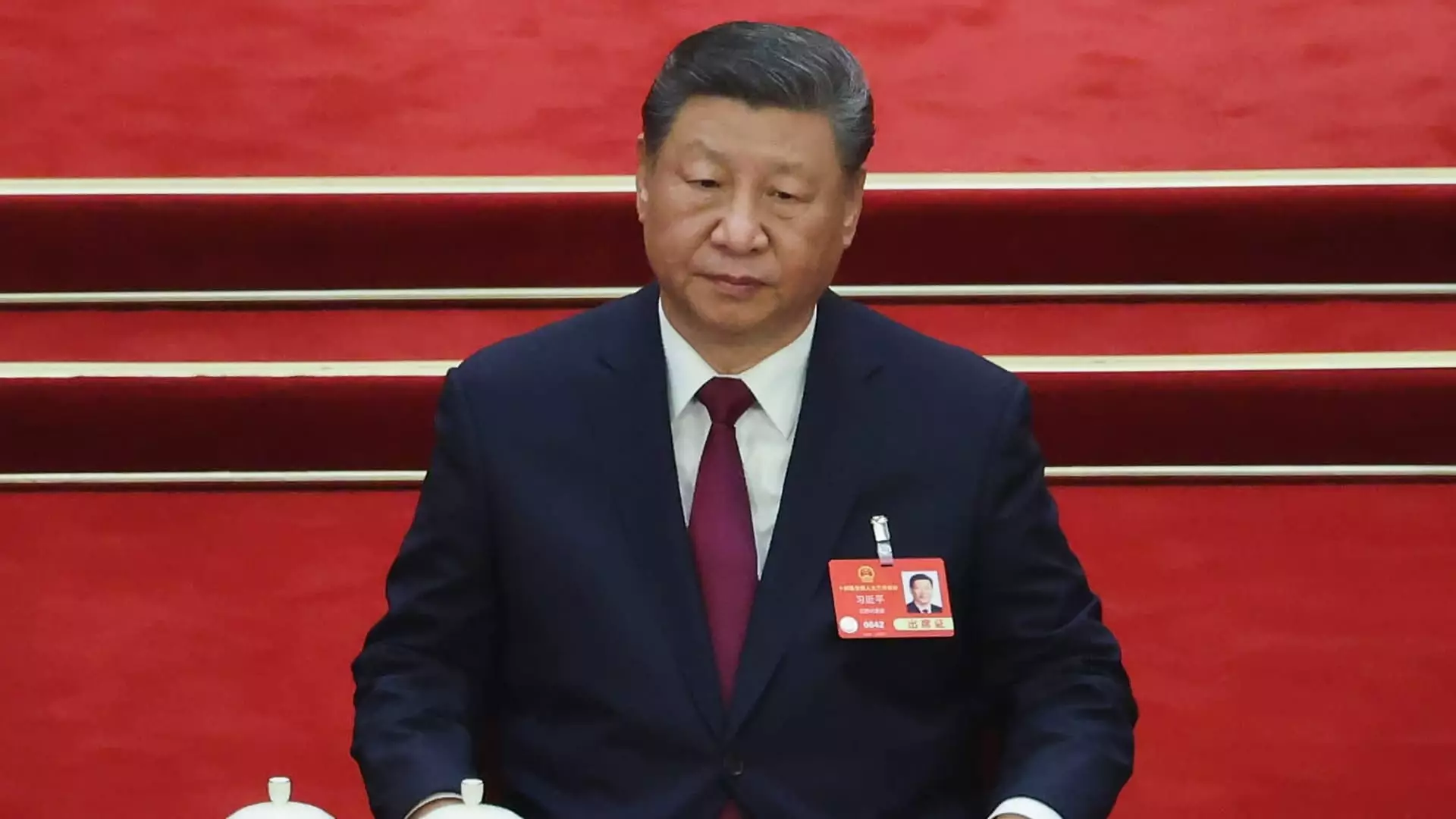In a dramatic escalation of economic hostilities, China has retaliated against the U.S. by increasing tariffs on American goods to an astounding 84%. This latest move, spurred by President Donald Trump’s robust tariff policies, signifies not just a tit-for-tat response but a chilling reminder of how interconnected yet fragile global trade relations are. For a world that prides itself on being economically integrated, this deepening rift raises ominous questions about the future of international commerce.
The newly announced tax hike means American-made products face nearly insurmountable barriers to entry into one of the largest markets in the world. The increases come following the U.S.’s own escalation of tariffs to an eye-popping 125%, sparking concerns not only about the future of U.S.-China relations but about the broader implications for global economic stability. This escalatory dance demonstrates a dangerous willingness among both nations to inflict damage on one another, oblivious to the collateral fallout—more than simply affecting the direct parties involved, this confrontation is likely to cripple economies worldwide.
The Economic Fallout That Can’t Be Ignored
The sheer scale of this trade war is staggering. In 2024 alone, the U.S. exported roughly $143.5 billion worth of goods to China, while absorbing nearly $439 billion in products from the East. These figures illustrate a colossal trade imbalance that both administrations have pledged to rectify. However, the remedy—of slapping punitive tariffs on imports—lacks foresight. Rather than resolving issues of inequity, it throws fuel on the fire. The increased levies not only threaten to suppress trade volume but also bear the potential to plunge the economies of both nations into uncertainty.
As Treasury Secretary Scott Bessent lamented, the apparent unwillingness on China’s part to negotiate is a grave misstep, positioning them as “the worst offenders in the international trading system.” What’s lost in that contention is the fact that this battle is stifling economic growth and wreaking havoc on businesses and investors looking for stability. Countries that once enjoyed healthy trade relationships with either nation are now being roped into this unyielding conflict, generating a domino effect of economic distress.
The Investor Skittishness That Defines Today’s Market
This new chapter in the U.S.-China trade war has sent shivers down the spine of global investors. Markets are in turmoil, illustrating the fragility of economic sentiment in the face of escalating trade disputes. The S&P 500’s notable decline—down nearly 20% from its peak—puts it firmly in bear market territory, mirroring declines in indexes across Seoul and Shanghai. With companies more cautious in their investment decisions, the prospect of a slowdown in economic growth becomes increasingly probable, resulting in a more significant shakeup in the fabric of global finance.
Moreover, the uncertainties about future trade policies amplify fears of rising inflation and dwindling corporate profits. Meanwhile, the bubble of investor optimism has burst, causing massive sell-offs that underline widespread anxiety. As trade tensions mount, the risks associated with holding on to equities become evident, demonstrating how political decisions reverberate across financial landscapes.
The Dire Need for Diplomacy
The current U.S. administration’s willingness to wield tariffs as a weapon illustrates a fundamental misunderstanding of the complexities of global trade. With recent comments from President Trump suggesting a combative approach, the emphasis seems to be on punitive measures rather than constructive dialogue. This confrontational attitude not only exacerbates tensions with China but sends a chilling message to other nations that might consider the U.S. a trading partner.
Effective resolution requires open channels of communication—not bombastic rhetoric. Both sides must recognize that cooperation beats competition in the long term. Unfortunately, the ongoing trade war only serves to entrench adversarial postures, reinforcing the “us versus them” mentality that continues to sow division. A more nuanced understanding of the international trade landscape could lead to solutions that promote equitable growth for all parties involved.
The current trajectory is not just a battle of tariffs; it is a high-stakes game with no clear winners. In this fragile landscape, the need for dialogue and diplomacy has never been more pressing.

Leave a Reply